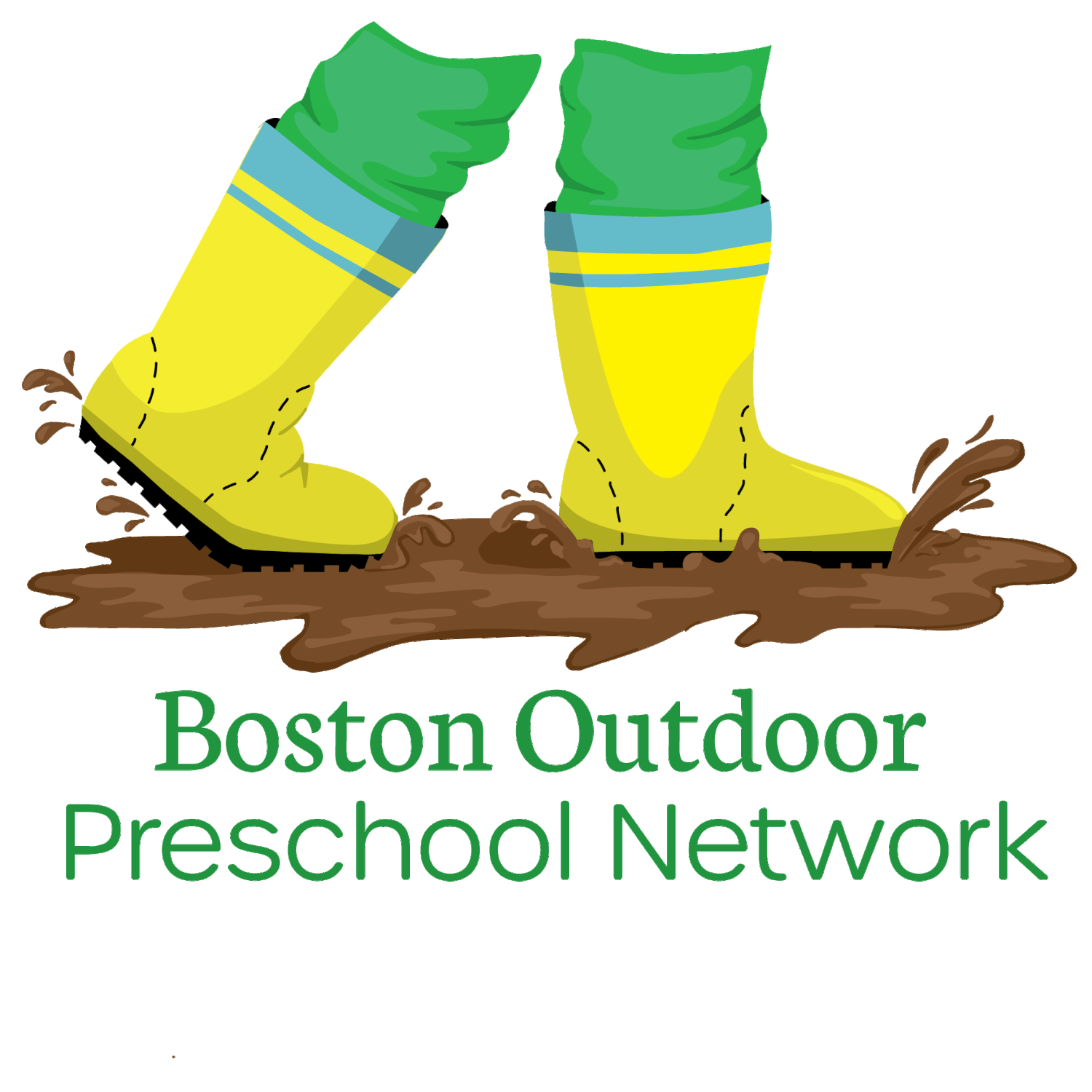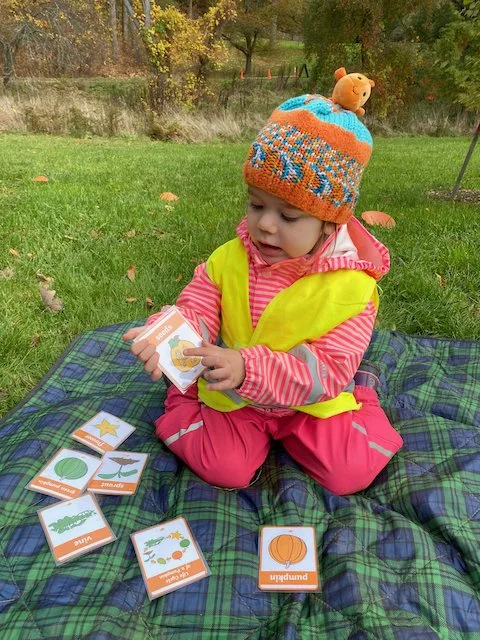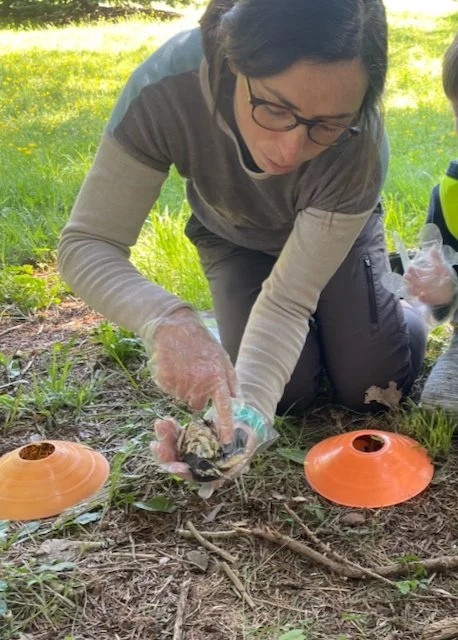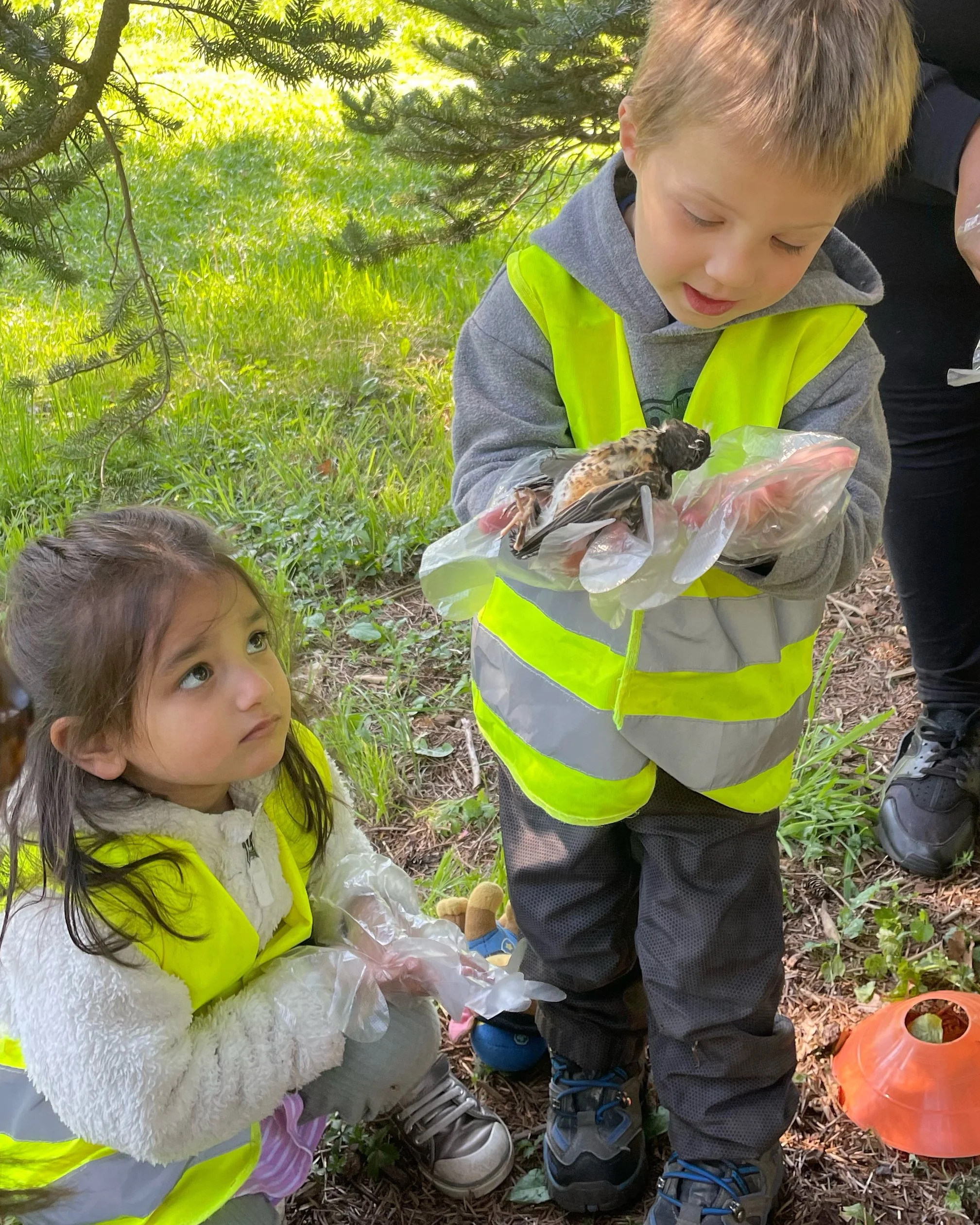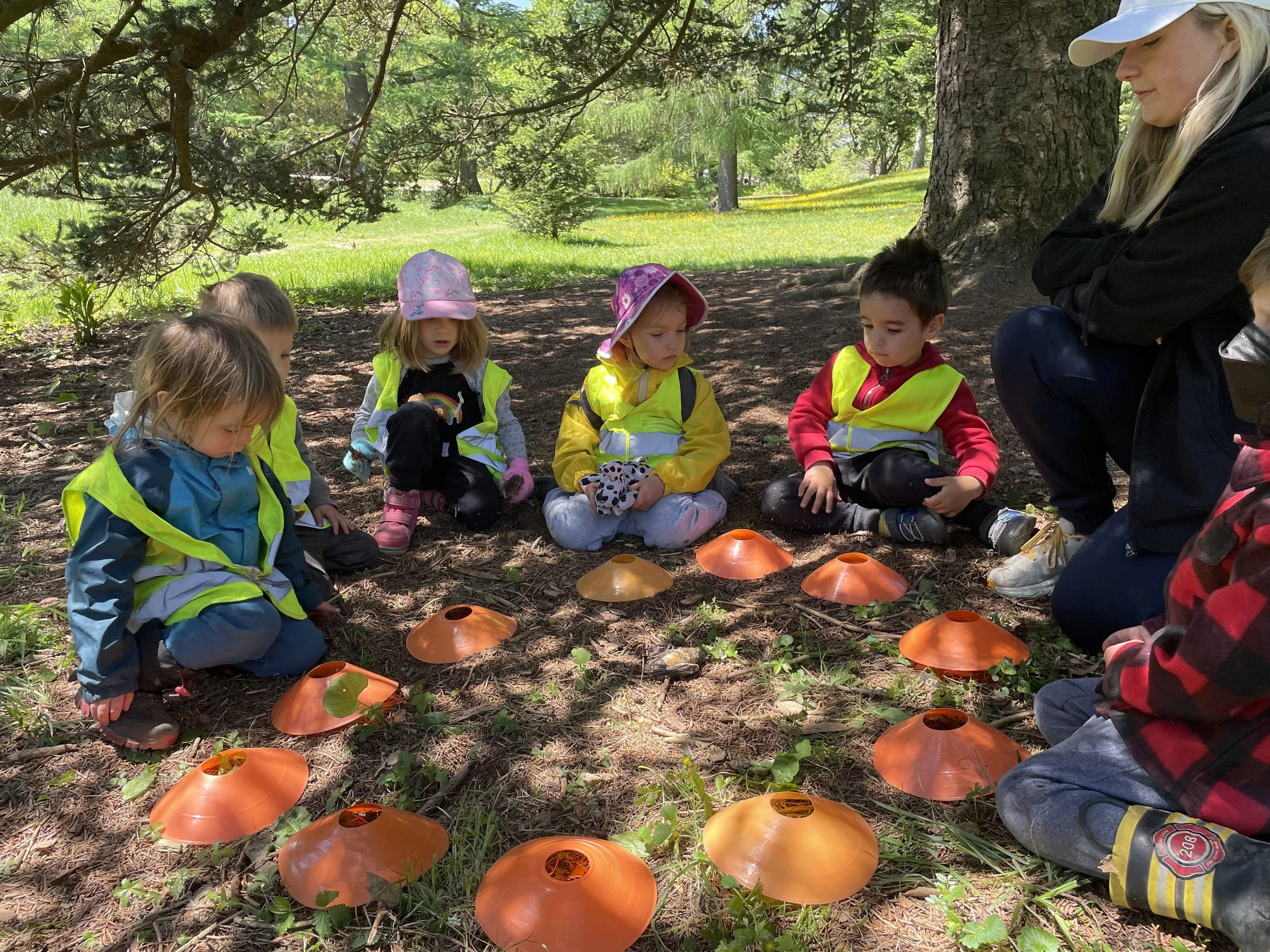An Outdoor School Year and the Cycle of Life
by Marie O’Reilly, lead Preschool teacher, BOPN parent, & nature enthusiast
This year at BOPN, we learned a lot about the life cycle. In fall we explored pumpkins' journeys from seed to fruit to seed again. Pretending to be squirrels, we buried acorns, hoping they might later sprout into oaks.
In winter we spotted silent snags and dug into logs that used to be trees. We built dens for our stuffed animals to survive the cold. We read about living and non-living things, and played sorting games to work out what makes something alive.
To mark the start of spring we planted clover seeds and discussed what they need to grow. We examined red seed cones and brown pollen cones in the spruce trees. We stuck clingy burrs to our clothes to experience one way that people and animals spread a plant's seeds.
In late spring we had an incredible opportunity to explore the stage of the life cycle that gets the least attention in our society. We found a dead robin under the tree at our drop-off spot. The fledgling was fully intact and lying undisturbed on the ground.
Since March we have delighted in observing so many robins hopping around the Arboretum. We’ve gotten surprisingly close to many of them. It’s incredible how quiet the children can get when tiptoeing toward a robin busily looking for worms! But naturally the birds fly away before we can take a very close look.
When we came upon the deceased robin—an animal to which the children had no prior attachment—we were able to examine a bird’s anatomy in detail. We, the “Beautiful Blue Jays” class, so frequently flap our “wings” pretending to be birds.
Now, we could look at real wings closely and see the bones that gave them shape. We noticed the pointy talons on the bird’s feet and considered together what they are for.
After putting on disposable gloves, we gently and respectfully held the robin and felt the weight of its body in our hands, each saying goodbye to it before placing it back where we’d found it.
The children were fascinated by this discovery. On Thursday and again on Monday, we gathered around the robin and explored the death part of the life cycle. We asked the children what death means to them; how they thought the bird died; how they felt about it. We created space for their myriad answers and ideas, which ranged from practical (“Dead means you can’t speak or move or clean out the basement!”) to faith based (“rising from the dead means something comes back to life”) to creative fantasy (“I think a dinosaur got it!”).
As the children expressed themselves and entered into discussion with each other, we also answered their questions: No, the bird is not asleep–physical death is permanent; the bird will not “wake up.” No, it does not hurt, the bird can no longer feel anything–its body has stopped working. While we didn’t know the specifics of how this bird died, we could speculate about the physical reasons for its death and know that every living thing eventually dies.
The National Association for the Education of Young Children tells us that comprehension of the physical realities of death in this way prepares children to cope with personal loss in their own lives and helps prevent feelings of guilt or shame that could otherwise arise in a child when experiencing loss.
It can be difficult to broach the subject of death in traditional school settings, for a variety of reasons. At outdoor school, the natural world provides the opportunity to explore the realities of death through direct encounter, and to come back to the lessons again.
By Monday, the bird’s corpse was mostly buried under the soil. The children were so curious when they noticed its protruding feet and belly were moving a little. We talked about how insects and other organisms were helping to decompose the bird.
We discussed how this returns nutrients to the soil and helps new plants grow, which other animals and birds in turn use for nourishment and growth. We spoke about how we can feel sad that the bird died and at the same time excited about the new life that it will contribute to.
Being immersed in nature also enables us to continually consider death in the context of the broader life cycle. On Thursday, one classmate found a small blue robin’s egg close by. On Monday, as our conversations were drawing to a close, another child noticed a busy adult robin hopping in the grass not far from us: “Look, there’s a not-dead robin!” she exclaimed. Just as we see flowers blooming in one season, we also see them wither in the next. While one day we see baby birds chirping in a nest, on another we see a bird that has fallen from the tree.
The fodder for discussion is ever present. It’s what we, as educators, do with these opportunities that matters.
To honor the bird’s life, we encircled it and sang our gratitude song together:
Thank you, dear earth. Thank you, dear sun.
Thank you, dear trees, and the flowers—every one.
Thank you, dear bees, and the birds in the trees.
Thank you to you, and thank you to me.
References:
Schonfeld, D. J. (2019). How Early Childhood Educators Can Explain Death to Children. Teaching Young Children, 14(3). https://www.naeyc.org/resources/pubs/tyc/spring2021/explaining-death
